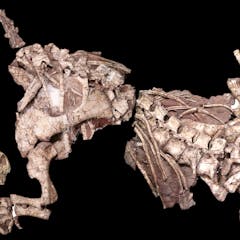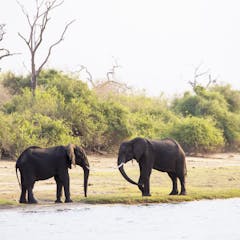
Articles on Dinosaurs
Displaying 1 - 20 of 259 articles

Musankwa is only the fourth dinosaur to be named from Zimbabwe.

Paleontologist Bill Ausich explains whether dinosaurs could ever roam the Earth again. Listen on The Conversation’s Curious Kids podcast.

Understanding more about feathers could change the way we think about dinosaurs.

Ever been made to feel small? Here’s why being petite is no bad thing.

Calcite, the material making up fossilized eggshells, may preserve amino acids better than bone.

By examining fossilized bone tissue, a new study finds rapid growth was an asset for survivors of the Great Dying 250 million years ago, Earth’s largest mass extinction event.

Oceanic dispersal of dinosaurs between Europe and Africa shows how low-probability, high-impact events drive evolution.

If you love learning about dinosaurs don’t let crowdpleasers like the T Rex distract you from the fascinating birdlife that once roamed the Earth.

Some of these giant vegetarians were as tall as a 3-story building. Microscopic analysis of their teeth, bones and eggshells reveals how they grew, what they ate and even their body temperature.

The mission provided details about how to deflect an asteroid should one threaten Earth in future.

Fossils suggest that as many as three abelisaurid species coexisted in Morocco around 66 million years ago.

The Isle of Skye has a rich palaeontological heritage, so perhaps it’s no surprise scientists made an important discovery there.

Rather than a juvenile of a known species, several fossilized bones represent a new species – and shed light on the question of whether dinosaurs were already in decline before disaster struck.

Some time between 1100 and 1700 AD, a Massospondylus bone was discovered and carried to a rock shelter in Lesotho.

Elephants can be viewed as geological engineers that create minor tectonic forces on the substrate they walk on.

Our mammal ancestors evolved to compete with dinosaurs but may have lost something in the process.

Impress your niece or nephew with these T rex facts.

New laboratory experiments add analytical rigour to the search for ancient biomolecules

Small holes in baby dinosaur bones add to the growing mass of evidence that the ancient creatures were warm-blooded and highly active.

The fossil record tells conflicting stories about what happened to flowering plants after the asteroid.
